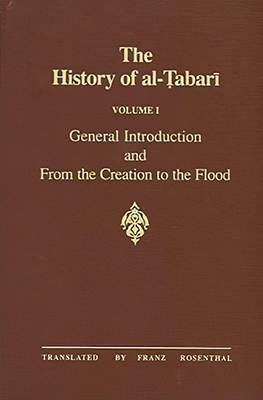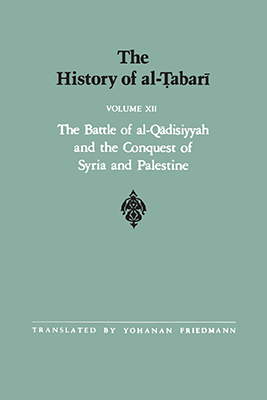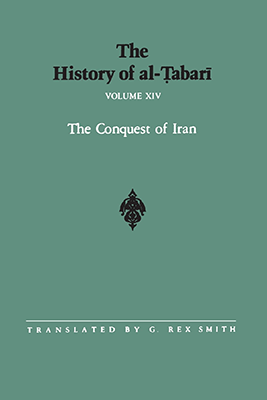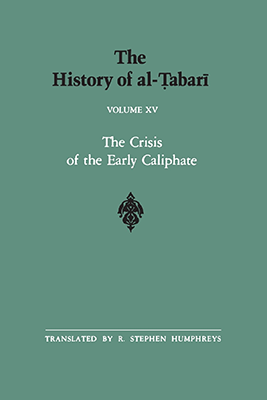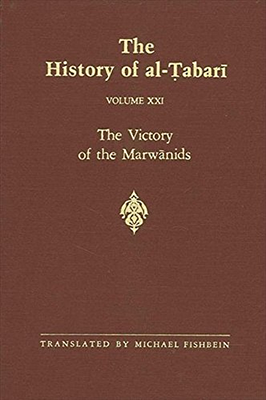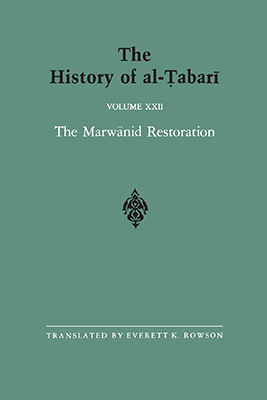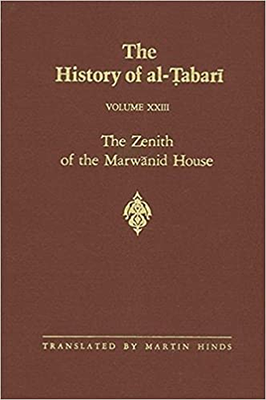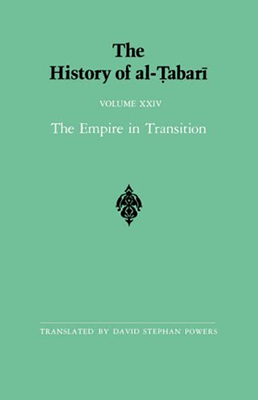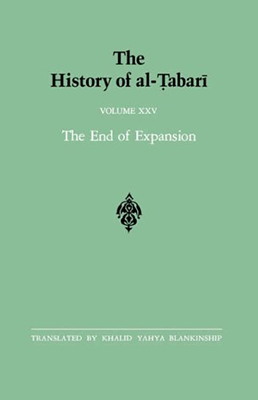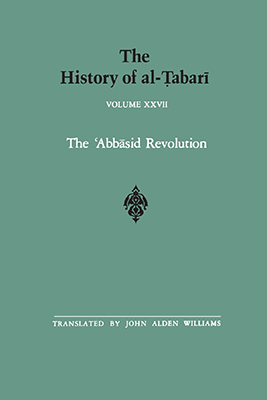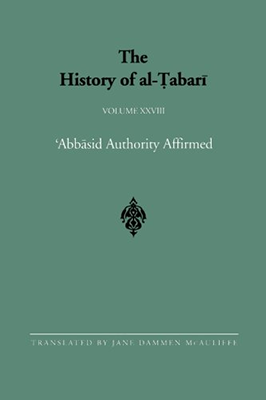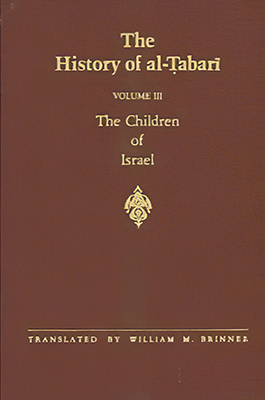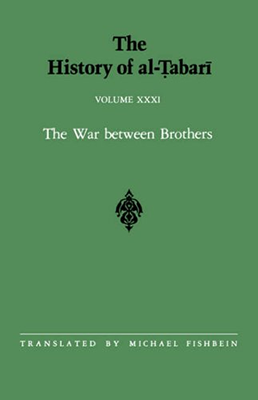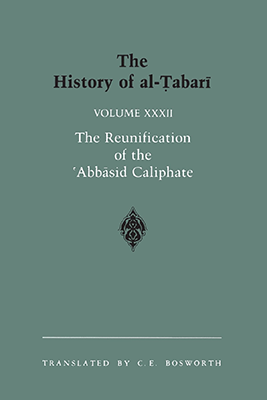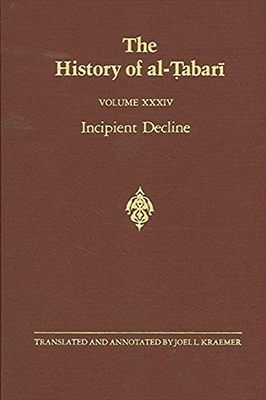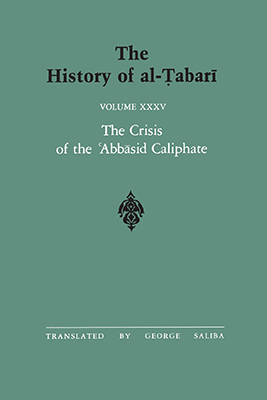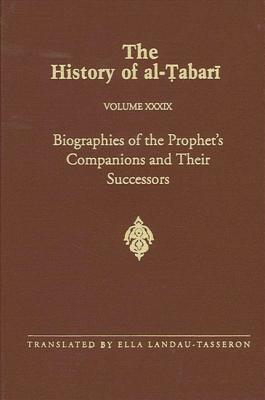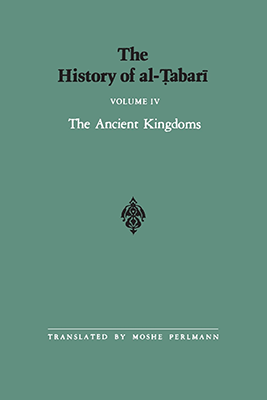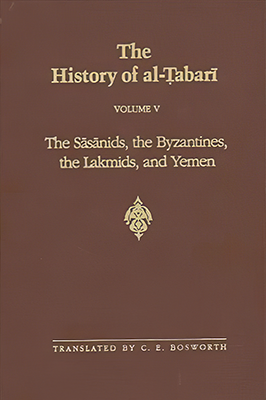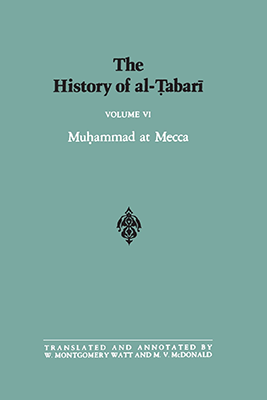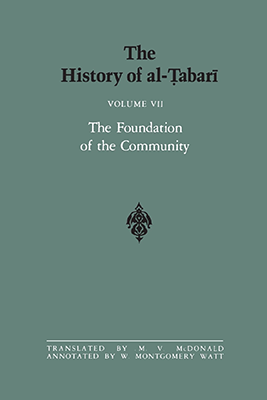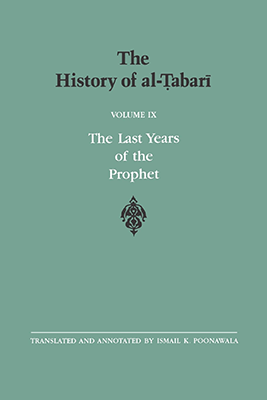He is Muhammad ibn Jarir ibn Yazeed ibn Katheer ibn Galib, famously knows as Imam Abu Ja'far at-Tabari. He is one of the greatest most renowned, prominent and influential early Persian Muslim scholars of the third Hijri century, historian and exegete of the Qur'an from Tabaristan, modern Mazandaran in Persia/Iran. He is commonly reffered to as the Imam of the Mufassireen indicating his high status and deep knowledge.
Birth and Early Years
Abu Ja'far Muhammad Ibn Jarir at-Tabari (رحمه الله) waswas born in Amul,6 Tabiristan (Iran), during the winter of 839CE. At-Tabari himself was not really sure whether his birth fell near the end of 224 AH, or the beginning of 225 AH. It was, however, during the reign of the Abbasid caliph, al-Mu’tasim.
At-Tabari memorised the Holy Qur'an by heart when he was only seven years old. He served as a prayer leader from the age of eight and began to study the prophetic hadeeth at age nine. It was narrated that his father had a dream concerning him: he saw his son (at-Tabari) standing before the Holy Prophet (ﷺ); in between his two hands was a bag filled with stones, which he spread in front of the Prophet (ﷺ). On the basis of this, a dream interpreter told at-Tabari’s father that at-Tabari would grow up as a good Muslim and become a defender of its Shari'ah. Because of this, at-Tabari’s father agreed to support at-Tabari’s studies while he was still a small boy. He also encouraged at-Tabari to leave home in quest of knowledge once he reached puberty.
His Quest for Knowledge
In his quest for knowledge, at-Tabari left home in 236 AH/850CE, when he was just twelve. He retained close ties to his home town, however, returning at least twice (although on the final occasion, in 290 AH, his outspokenness caused some uneasiness and led to his quick departure). His studies, however, took him first to ar-Ray, on the site of present-day Tehran. He remained there for about five years. The most prominent figures amongst his teachers at ar-Ray were: al-Muthanna Ibn Ibrahim al-Amuli, Salama Ibn al-Fadl al-Maghazi and Ahmad Ibn Hammad al-Dawlabi. In particular, however, he also studied with Ibn Humayd (or Abu Abdallah Muhammad ibn Humayd ar-Razi, d.248AH/862CE), who was then in his seventies. Ibn Humayd had previously lectured in Baghdad and had been invited by the noted jurist, Ibn Hanbal, to come and teach in ar-Ray. Ibn Humayd became one of at-Tabari’s most frequently cited authorities. With him and his other teachers, at-Tabari studied Hanafi jurisprudence and the historical works of Ibn Ishaq (a well-known author of as-Seerah, or the life of the Prophet Muhammad ﷺ). It was narrated that at-Tabari laid the groundwork for history after he studied Ibn Ishaq’s Mubtada’ and Maghazi. At-Tabari was also introduced to pre-Islamic and early Islamic history during his studies.
After ar-Ray, at-Tabari’s quest of knowledge took him to Baghdad. He was not yet seventeen upon his arrival in Baghdad. He went there with an expectation to study under Ahmad Ibn Hanbal; the latter, however, died in either late 241AH/855CE or early 242AH/856CE, i.e. shortly before at-Tabari’s arrival. Nevertheless, at-Tabari stayed in Baghdad until 242AH/859 CE, after which he journeyed to other important places, namely: Basra, Kufa and probably Wasit. In Basra, he met and studied under the eminent scholars Humayd Ibn Mas’ada (who he frequently quotes in his Tafseer), Bishar Ibn Mu’adh al-A’qadi, Muhammad Ibn Abd al-A’la as-San’ani, Abu al-Ash’ath Ahmad Ibn al-Miqdam, Muhammad Ibn Musa al-Harashi, Abu al-Jawza’ Ahmad Ibn Uthman and Muhammad Ibn Uthman. It is narrated that the scholar at-Tabari profited most from in Basra was Muhammad Ibn Bashar, who was also known as Bundar. Indeed, he frequently cites Bundar as a transmitter in his works. In Kufa, on the other hand, at-Tabari met Hannad Ibn al-Sari, who reputedly provided him with much information for his Tafseer. In addition, at-Tabari also encountered Ismail Ibn Musa al-Fazari, Sulayman Ibn Abd al-Rahman Ibn Hammad at-Talhi (an expert in reciting the Qur'an) and Abu Kurayb Muhammad Ibn al-A’la. The latter, in particular, supposedly exercised great influence on at-Tabari. Although Abu Kurayb was a difficult scholar, at-Tabari managed to mollify him, appeasing him with his extraordinary ability. Indeed, Abu Kurayb was amazed with at-Tabari’s ability to memorize ahadeeth (traditions) in comparison to other students.
After spending about two years in southern Iraq, at-Tabari subsequently returned to Baghdad in 244AH/858CE. There he was invited by the vizier, Ubaydallah Ibn Yahya Ibn Khaqan (al-Khaqani), to teach his son, Abu Yahya. He held this tutorial position for four years (244AH-248AH), with the vizier paying him 10 dinar per month (reportedly at-Tabari refused any extra remuneration or gifts on top of the agreed pay). In Baghdad, at-Tabari also reportedly met and studied with Ahmad Ibn Yusuf at-Taghlibi, before learning Shafi'ee jurisprudence under the supervision of Abu Said al-Istakhri.
Later, in 253AH//867CE, at-Tabari visited Egypt, reportedly stopping in Syria and Palestine on the way. Although unclear, he probably studied in the latter two locations: the authorities cited in his writings include references to scholars from Hims (or Homs), ar-Ramla and Asqalan. At-Tabari probably met these scholars in either Jerusalem or Damascus. In Beirut, he also studied under al-Abbas Ibn al-Walid Ibn Mazyad al-Udhri al-Bayruti, who instructed him in variant readings (huruf) of the Qur'an according to the Syrian School. Al-Bayruti was also instrumental in conveying to at-Tabari the legal views of al-Awza’i, as narrated through al-Bayruti’s father, al-Walid, himself a prominent jurist. With al-Abbas, at-Tabari also completed his study of the Qur'an based on the narrations of the people of Sham.
When at-Tabari finally arrived in Egypt, he studied under Abu al-Hasan ‘Ali Ibn Siraj and Yunus Ibn ‘Abd al-‘A’la, then Egypt’s leading scholar in Hadeeth and Qur'anic recitation. Since Egypt also hosted a great number of Shafi'ee and Maliki scholars, at-Tabari also gained an understanding of these legal systems. From the Shafi'ee side, he studied with ar-Rabee’ Ibn Sulayman, al-Muzani and Muhammad Ibn al-Hakam, while from the Maliki side he encountered Muhammad Ibn Abdallah Ibn Abd al-Hakam.
After his time in Egypt, at-Tabari returned to Baghdad. There he began identifying himself as a Shafi'ee scholar. He continued in this mould for the next ten years (i.e. until 267AH/880CE), after which he concentrated on teaching and publishing his own works on legal theory and practice, Qur'anic commentary and history. This development placed him at the forefront of scholars. Many students came to study with him, constituting themselves as a special madhab, known as Jariri.
At-Tabari: A Scholar
Like other scholars from the period, at-Tabari mastered three fields of learning: legal theory, Qur'anic science and history. His gigantic contributions in these three areas are attributable to his exceptional learning in a variety of disciplines. In particular, his work on Tafseer demonstrates his outstanding capability in Arabic grammar and lexicography. Indeed, he was famous for his interest in foreign languages: his Tafseer discusses the relationship between Persian, Arabic and Ethiopic loan words in the Qur'an. He also knew the language of ‘Uman in addition to Coptic.
Apart from the above, at-Tabari also studied poetry with the great philologist, Thallab. In this respect, Ghulam Thallab (another of Thallab’s students) praised the accuracy of grammar and language used by at-Tabari in his Tafseer. The science of prosody (urud) was also known to at-Tabari through his reading of al-Khalil’s fundamental work on the matter.
In addition, at-Tabari also excelled in arithmetic, algebra, logic, dialectics and falsafa (philosophy), the last of which he utilised to refute Mu’tazila views. It was reported that medicine was also one of at-Tabari’s great interests, which he pursued with his acquaintance, ‘Ali Ibn Rabban, author of the great medical encyclopaedia, Firdaws al-Hikma.
His Works
Imam at-Tabari (رحمه الله) was well-versed in many branches of Islamic knowledge such as Tafseer (interpretation of the Glorious Qur'an), Hadeeth, history, jurisprudence, ways of Qur'anic recitation, language, and literature. Yet, he mastered and specialized in three branches: Tafseer, history, and jurisprudence. He wrote two of the most important and voluminous Islamic books in Arabic. The following is some of his works:
- Tareekh ar-Rusul wal-Muluk (The History of Prophets and Kings): It is also known as Tareekh at-Tabari. It covers history from the origin of creation and the descent of Adam to the earth. It also covers the stories of the Prophets and Messengers and the previous nations. In addition, it features the history of Islam from the mission of the Prophet ﷺ until the year 203 A.H. The book is printed in ten volumes and has been translated into several languages. It is one of the most important references for researchers and students of Islamic history in the first three Hijri centuries. All authors on Islamic history – until now – benefited and continue to benefit from this book.
- Tabseer Uli an-Nuha wa Ma’alim al-Huda (An Instruction for the Intelligent and Directions towards Right Guidance). Also known as al-Baseer fi Ma’alim ad-Deen, Tabsir fi Usul ad-Deen or just at-Tabseer, this completed book was addressed to the people of Tabaristan and concerns the disagreements which had arisen amongst them about the identity or non-identity of names and things named and the doctrines of innovators. This book contains thirty folios.
- Ikhtilaf Ulama' al-Amsar Fi Ahkam Shara'i al-Islam (The Disagreements of the Scholars in the Major Centres with Respect to the Laws of Islam). Also referred to as either Ikhtilaf al-Fuqaha (sometimes reduced to just Ikhtilaf) or al-I’tidhar, this text comprises three thousand folios. In it, at-Tabari discusses the disagreements amongst scholars like Malik bin Anas, Abdur-Rahman Ibn Amr al-Awza’ee and Sufyan ath-Thawri. This work also contains at-Tabari’s defence of the Hanbalis.
- Sareeh as-Sunnah (The Essence of Orthodox Muslim Belief).
- Al-Jami’ fi al-Qira'at (The Complete Collection of Variant Readings of the Qur'an). Also known as Al-Fasl Bayna al-Qira'at, Kitab fi al-Qira'at or Kitab al-Qira'at wa't-Tanzil wa'l-A’dad, this text is amongst at-Tabari’s completed works. It records the variant readings (huruf) of the Qur'an and specifies the names of the Qur'anic readers in Medina, Mecca, Kufa, Basra, Syria and elsewhere. When referring to the readings, at-Tabari states his own preference for what is correct and provides proofs to support his case. He also gives his tafseer for certain verses and establishes their correct linguistic form (i’rab).
- Adab an-Nufus (The Proper Ways of Spiritual Behaviour). Sometimes referred to as Al-Adab al-Hamida wa'l-Akhlaq an-Nafisah or Al-Adab an-Nafisah wa'l-Akhlaq al-Hamida, it explains man’s religious duties according to all the parts of the human body, beginning with the heart, tongue, eyes, ears and so on. It bases itself on the traditions of the Prophet (ﷺ), the practice of the Companions and their followers and other pious men. Nevertheless, this work remains incomplete.
- Adab al-Manasik (The Proper Ways in Performing the Pilgrimage). This work deals with the proper procedure for performing the pilgrimage. Other authors have sometimes referred to it as Mukhtasar Manasik al-Hajj, such as in Ibn Asakir’s Irshad (also known as Kitab al-Manasik).
- Tahdheeb al-Athar Wa Tafseel Ma’ani ath-Thabit ‘An Rasulillah Min al-Akhbar (An Improved Treatment and detailed Discussion of the Traditions established as going back to the Prophet). This work deals with the traditions transmitted from the Companions of the Prophet (ﷺ). It is also known as Tahdheeb al-Athar, or just at-Tahdheeb.It is not, however, a mere collection of hadeeth. Rather, it provides an exhaustive and penetrating analysis of the philological and legal implications of each hadeeth mentioned in the text, discussing its meaning as well as its significance for religious practice and theory. The text, however, remains unfinished.
- Fadha'il Abi Bakr Wa Umar
- Basit al-Qawl fi Ahkam Shara’i al-Islam (A Plain and Simple Exposition of the Laws of Islam). Contained in 1500 folios, each chapter of this work deals with the agreements of the Companions and their followers according to their way of transmissions. At-Tabari also mentions his preferred view on the subject matter. He published the document forms (shurut), records and documents (al-Mahadir wa's-Sijillat), last wills (al-Wasaya), characters of the judges (Adab al-Quda), ritual purity, prayers, charity, taxes and classification of scholars (Tartib al-‘Ulama’). This work is incomplete.
- Latif al-Qawl fi Ahkam Shara’i al-Islam (A Light Discussion on the Muslim Laws). This text contains the sum total of his legal school and became key for his followers. A completed text, it is valuable for understanding his madhab. It is also referred to as Latif.
- Al-Khafif fi Ahkam Shara’i al-Islam (The Light Work on the Laws of Islam). Also known as al-Khafif fi'l-Fiqh, this is an abridgment of Kitab al-Latif. Meant to facilitate an understanding of Islamic law, it contains four hundred folios.
- Dhayl al-Mudhayyal (The Historical Information on Religious Scholars needed in Connection with History). Also known as Tarikh ar-Rijal, this completed text discusses the history of the Companions of the Prophet. It has one thousand folios.
- Jami' al-Bayan fi Tafseer al-Qur'an (The All-Comprehensive Book on the Interpretation of the Glorious Qur'an): It is known, in short, as Tafseer at-Tabari (تفسير الطبري). It is one of the most famous and voluminous Tafseer books; it is a reference for whoever wants to understand the meanings of the Glorious Qur'an. At-Tabari dictated it to his students and it took him eight years to finish it. He started in 283H and finished in 290H. The book is printed in thirty volumes and is widespread among students of knowledge all over the world. It is available in academic institutions, public libraries, and universities. This Tafseer was used by famous scholars like Ibn Kathir (رحمه الله), Imam Suyuti (رحمه الله) and others in their own Tafaseer.
Praise and Methodology of His Tafseer
Abu Hamid al-Isfarayini (رحمه الله) said in Tabaqaat al-Mufassireen by ad-Dawoodi, 2/106:
If a traveller were to travel to China in order to obtain it, that would not be too much.
Ibn Khuzaymah (رحمه الله) said in Siyar A'lam an-Nubala', 14/273:
I have read it from beginning to end and I do not know of anyone on the face of the earth who is more knowledgeable than Ibn Jarir.
Shaykh al-Islam Ibn Taymiyah (رحمه الله) said in Majmu' al-Fatawa, 13/358:
With regard to the Tafaseer that are in circulation among the people, the most sound of them is the Tafseer of Muhammad ibn Jarir at-Tabari, for he mentions the views of the salaf with proven isnaads, and there is no bid'ah (innovation) in it, and he does not transmit reports from dubious sources such as Muqaatil ibn Bukayr and al-Kalbi.
He also said in Muqaddimah fi Usul at-Tafseer (p. 35), concerning the Tafseer of Ibn Jarir:
It is one of the best and greatest of Tafaseer.
He relied on the views of three generations of mufassireen among the salaf, namely the Sahabah, the Taabi'een, and the followers of the Taabi'een, and he quotes their opinions with isnaads going back to them. This is an important feature of his book which is not present in many of the books of Tafseer that are in circulation among us. But this feature does not matter to many ordinary Muslims who are not able to research asaneed and distinguish sound asaneed from weak ones; all they want is to know whether an isnaad is sound or weak by means of a clear and brief statement to that effect.
When he has finished quoting their opinions, he states which he thinks is most likely to be correct, then he describes how he reached that conclusion.
His Character
At-Tabari was well-known for being both humble and ethical. These attributes are particularly evident in the context of his attitudes towards gifts, which he would always reject. As such, he rejected the gifts offered by the vizier, al-Khaqani, when the latter appointed at-Tabari to teach his son (above). At-Tabari likewise refused a magnificent gift of three thousand dinars from a politician, al-Hayja’, the eventual founder of the Hamdanid Dynasty, on the pretext that he could not afford to return a gift of similar value. Indeed, throughout his lifetime at-Tabari tried his very best to disassociate himself from all gifts, particularly those extended by people in positions of power (including the caliph). He always shied away from them as so as to avoid allying himself with the political agendas of the donors. For him, a gift could become an embarrassment at some future time. This demonstrates his high integrity and dignity.
At-Tabari was an easy going person who had a very good relationship with his neighbours, be they scholars or ordinary people. He attended picnics with them and gave advice to their children. In terms of physical appearance, at-Tabari was tall and lean, had a dark-brown complexion, large eyes and a long beard. He reportedly kept his black hair and beard until he was in his eighties. The leanness of his figure was not heredity, but attributable to his attitude towards diet: he avoided fat and made full use of raisins, rutab (fresh dates), herbal leaves (such as thyme and habbatussawda), unripe fruits, refined wheat flour and olive oil.There is an anecdote that he insisted on both cleanliness and good table manners, all in accordance with the hadeeth of the Prophet.
All-in-all, at-Tabari was a religious scholar whose life was occupied with reading and teaching the Holy Qur'an, observing prayers, and writing.
His Death
Ibn Jarir at-Tabari stayed in Baghdad concentrating on nothing except teaching and writing. He was highly appreciated by the caliphs and rulers of his time until he died in Shawwal 310 A.H at the age of eighty-six, in the region of Tabaristan. A large number of people were present for his funeral procession and they buried him while feelings of sadness and mourning overwhelmed them.


